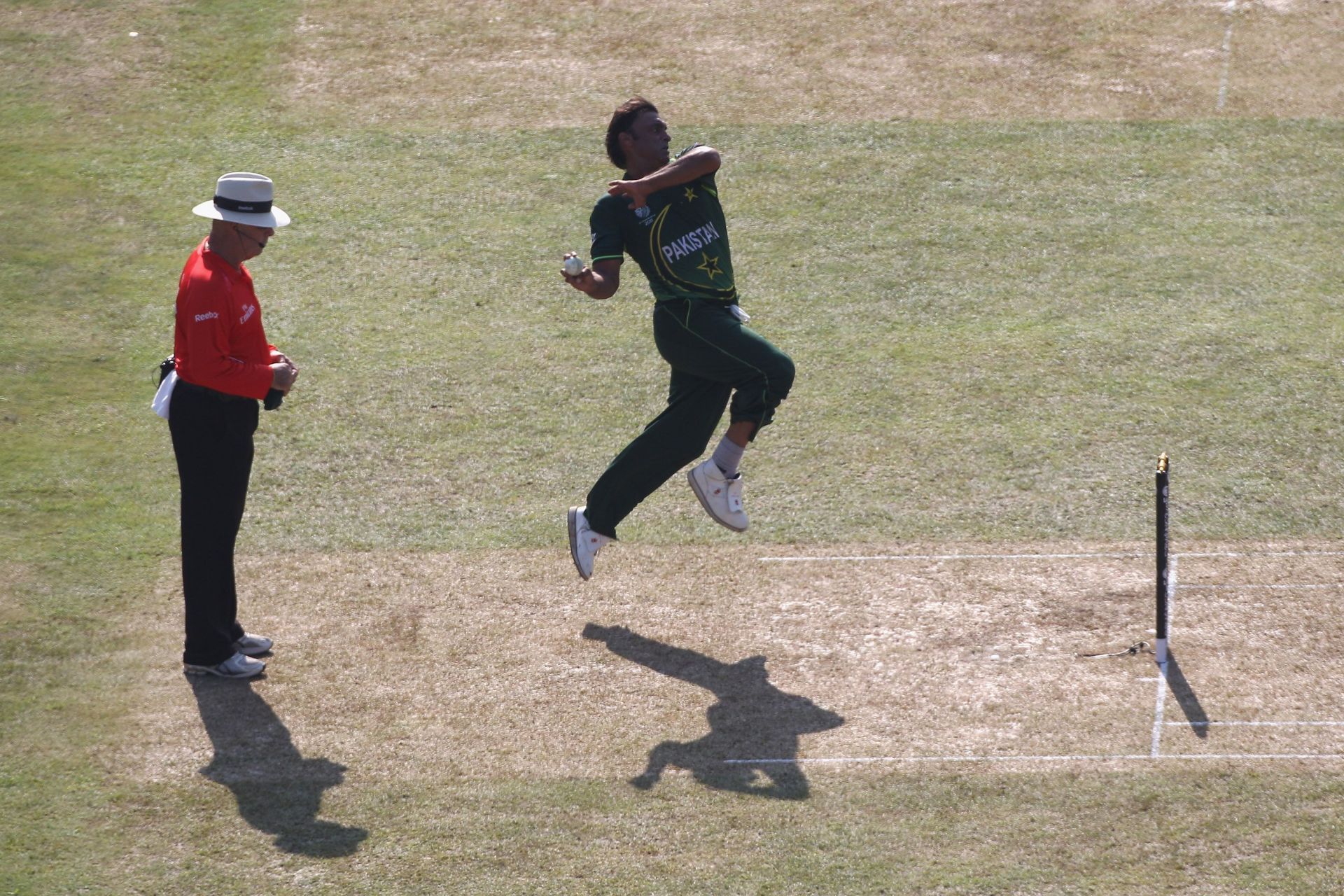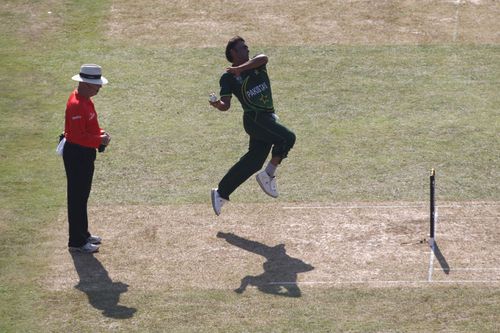
"I used to pull a truck for 4-5 miles" - Shoaib Akhtar opens up on what went into bowling the fastest delivery in international cricket

Former Pakistan pacer Shoaib Akhtar has revealed that he used to pull a truck for 4-5 miles as part of his extensive training focused towards breaking the 100 mph barrier in international cricket.
The 'Rawalpindi Express' stated that he even practiced on 26-yard pitches to strengthen his body to take the rigorous workload.
On February 22, 2003, Akhtar bowled the quickest delivery (officially recorded) in international cricket - 161.3 kph (100.23 mph) - against England during the World Cup clash in Cape Town. Former England opener Nick Knight faced the thunderbolt.
Speaking to Sportskeeda, the 46-year-old opened up in detail about how he achieved the record of bowling the fastest ball in international cricket. Admitting that it wasn’t easy or a natural process, Akhtar said:
"When you touch 155 kph as a bowler, remember that you have another 5 kph inside you. However, adding that extra pace to your bowling requires specific training. Before I broke the 100 miles record, I was bowling at speeds of 157-158 kph but I was not able to reach 160. I was a bit baffled over the same, wondering why it was not happening."
The former pacer then decided to undergo strenuous training, which included pulling tires, small vehicles and, eventually, a truck. He recalled:
"I began by running with tires but soon realized that they are light. Next, I started pulling small vehicles with my shoulders. There is less public in Islamabad, so I used to pull vehicles in the night. I used to match its speed with the pace of my run-up. I realized that the vehicle is also small, so I started pulling a truck. I used to pull a truck for 4-5 miles."
For his upper body, Akhtar started high-repetition training and increased the weight of his dumbbells from 10 kg to 20 kg and so on.
Once he was sure that his muscles were ready to take the load, the maverick former cricketer’s next step was practicing on 26-yard wickets instead of the usual 22-yard ones. He explained:
"When I bowled on 26-yard strips, my speed came down to 142-143 kph. But my aim remained to touch 150 kph on 26-yard surfaces. My muscles were in great shape back then and I started bowling with old, worn-out balls. I was aiming to hit the wickets with those old balls.
"I gradually moved back to bowling with comparatively newer balls. I was playing with the mechanics of the body. This procedure went on for two months and I started hitting 150 kph.”
However, when Akhtar decided to switch back to 22 yards, he faced another roadblock. He revealed:
"Since I had been practicing on 26-yard pitches, my balls were now landing behind the wickets. The body had gotten used to bowling on 26 yards."
The speedster, though, began working hard again and eventually managed to make the desired corrections.
"Told my teammates I will break the record" - Shoaib Akhtar
By the time the 2003 World Cup came around, Akhtar was so confident of breaking the 100 mph record that he told his teammates Saqlain Mushtaq and Azhar Mahmood that he was going to do it during the ICC event.
The former Pakistan fast bowler reminiscenced:
"When I bowled in the nets during the 2003 World Cup, batters were telling me - 'you'll kill us, you are bowling so quick. What have you done to increase your speed so much?' I told them that I have trained very hard because I want to break the 100-miles barrier.
"I told my teammates Saqlain (Mushtaq) and Azhar (Mahmood) that I will break the record in the World Cup."
Akhtar wanted to bowl even quicker after touching the 161.3 kph mark. However, better sense prevailed. He concluded:
"After I touched 161.3 kph, I thought I could bowl even quicker. But then I started getting cracks in my body - in my back, in my hamstring. I thought I would break down and get ruled out of the World Cup, so I left it at that."
The Rawalpindi Express ended his international career with 178 wickets in 46 Tests, 247 scalps in 163 ODIs, and 19 victims in 15 T20Is.